Precautions in Designing oscillation circuits
-
Drive level
Drive level denotes electric power required to oscillate a crystal unit, which can be calculated using the following formula.
Drive level (P) = I²⋅ReWhere I stands for current to pass in the crystal unit, Re for effective resistance of crystal unit, and Re=R1(1+Co/CL)².
If the Drive level (P) exceeds the specified level, oscillation frequency will shift. This occurs because an excessive level of power causes stress for the crystal and, consequently, temperature rise. If excessive drive level of power is applied to the crystal unit, this may deteriorate or damage the characteristics.
Equivalent circuit of crystal unit Oscillation circuit 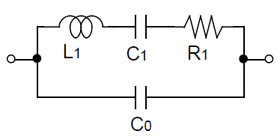
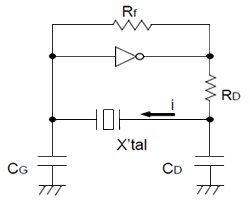
-
Allowance for oscillation
Unless adequate negative resistance is allocated in the oscillation circuit, oscillation start-up time may be increase, or NO OSCILLATION may occur. In order to avoid this, provide enough negative resistance in the circuitry design.
How to check the allowance for oscillation
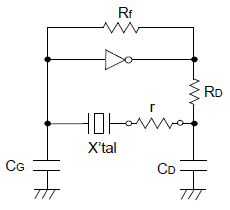
- (1) Connect the resistance (r) to the circuit in series with the crystal unit.
- (2) Adjust (r) so that oscillation can start (or stop).
- (3) Measure (r) when oscillation just starts (or stops) in (2) above.
- (4) Recommended (r)
(r) > CI x (5 to 10)
-
Load capacitance
Differences in the load capacitance of the oscillation circuit may result in a different oscillation frequency from the desired one,
as shown in the figure below. Approximate expression of the load capacitance of the circuit≒CL CG x CD / (CG + CD) + CS.
Where CS Stands for stray capacity of the circuit.Frequency and load capacitance characteristics
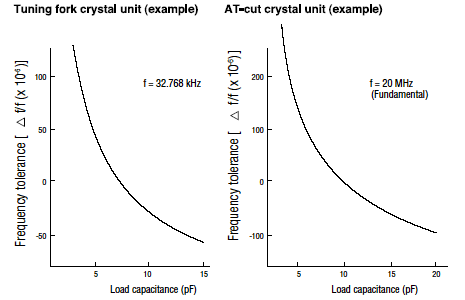
-
Reference for setting parameters of oscillation circuit
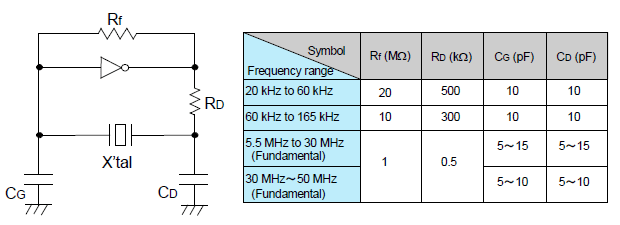
IC: equivalent to TC74HCU04 (unbuffer)
equivalent to TC74VHCU04 (unbuffer) (30 MHz to 50 MHz)
(TC74HCU04 and TC74VHCU04 are a product number of Toshiba Corp.)
